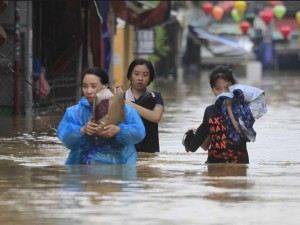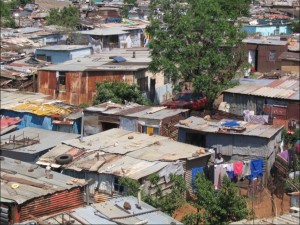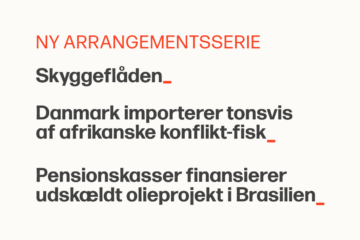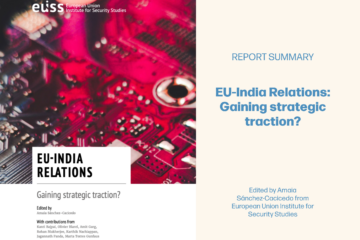How climate resettlement can work for communities
[:en]By Lily Salloum Lindegaard and Mikkel Funder
A policy brief brought forward by researchers at the Danish Institute for International Studies proposes that relocation due to climate-related dangers (flooding, soil erosion, changing rainfall patterns, etc.) can be a constructive way of helping the poor when well implemented. The brief uses the UNHCR definition of Planned Relocation as “the planned process by the State of resettling people affected by climate hazards away from their homes in a new location, provided with the conditions for rebuilding their lives.” However, the authors raise the concern of these resettlements not always being in the best interest of the people and whether they are good long-term solutions.
Furthermore, the policy brief recognizes the work of multiple international organizations in collaboration with the UN Refugee Agency in studying the effects of these relocations and proposing improvements. They all agree on that Planned Relocation should be the last resource they pursue and that further analysis of the contexts are needed. That is, this resettlement technique seems to be rather a quick fix without accounting for other possible solutions or analyzing more structural problems that these groups of people will have to go through.
In this sense, the authors provide three recommendations not only for those governments practicing climate resettlement but also for international organizations working with these displaced individuals. The three recommendations are as follows:
Recommendation 1: consider whether permanent relocation is actually necessary, or whether improving access to land and water for temporary coping and longer-term adaptation is better;
Recommendation 2: more focus and attention on monitoring that relocation is not only a political agenda pursued by central governments;
Recommendation 3: creating of legal frameworks and fora for conflict resolution to protect the most vulnerable post-resettlement, since often water and land rights issues follow;
Thus, this brief serves a ground for discussion over whether the process of Planned Relocation followed until now is the most effective and sustainable option for climate-vulnerable areas. Further, it seeks to initiate the debate among international organizations, who as donors and interventionists potentially have power over the direction of these resettlement processes. The livelihoods of people, entire villages at points, are dependent on a well-designed plan to approach climate challenges not only in the short term but also in the long run.
Read more here:
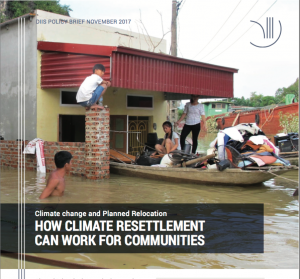 [:da]By Lily Salloum Lindegaard and Mikkel Funder
[:da]By Lily Salloum Lindegaard and Mikkel Funder
A policy brief brought forward by researchers at the Danish Institute for International Studies proposes that relocation due to climate-related dangers (flooding, soil erosion, changing rainfall patterns, etc.) can be a constructive way of helping the poor when well implemented. The brief uses the UNHCR definition of Planned Relocation as “the planned process by the State of resettling people affected by climate hazards away from their homes in a new location, provided with the conditions for rebuilding their lives.” However, the authors raise the concern of these resettlements not always being in the best interest of the people and whether they are good long-term solutions.
Furthermore, the policy brief recognizes the work of multiple international organizations in collaboration with the UN Refugee Agency in studying the effects of these relocations and proposing improvements. They all agree on that Planned Relocation should be the last resource they pursue and that further analysis of the contexts are needed. That is, this resettlement technique seems to be rather a quick fix without accounting for other possible solutions or analyzing more structural problems that these groups of people will have to go through.
In this sense, the authors provide three recommendations not only for those governments practicing climate resettlement but also for international organizations working with these displaced individuals. The three recommendations are as follows:
Recommendation 1: consider whether permanent relocation is actually necessary, or whether improving access to land and water for temporary coping and longer-term adaptation is better;
Recommendation 2: more focus and attention on monitoring that relocation is not only a political agenda pursued by central governments;
Recommendation 3: creating of legal frameworks and fora for conflict resolution to protect the most vulnerable post resettlement, since often water and land rights issues follow;
Thus, this brief serves a ground for discussion over whether the process of Planned Relocation followed until now is the most effective and sustainable option for climate-vulnerable areas. Further, it seeks to initiate the debate among international organizations, who as donors and interventionists potentially have power over the direction of these resettlement processes. The livelihoods of people, entire villages at points, are dependent on a well-designed plan to approach climate challenges not only in the short term but also in the long run.
Read more here:
